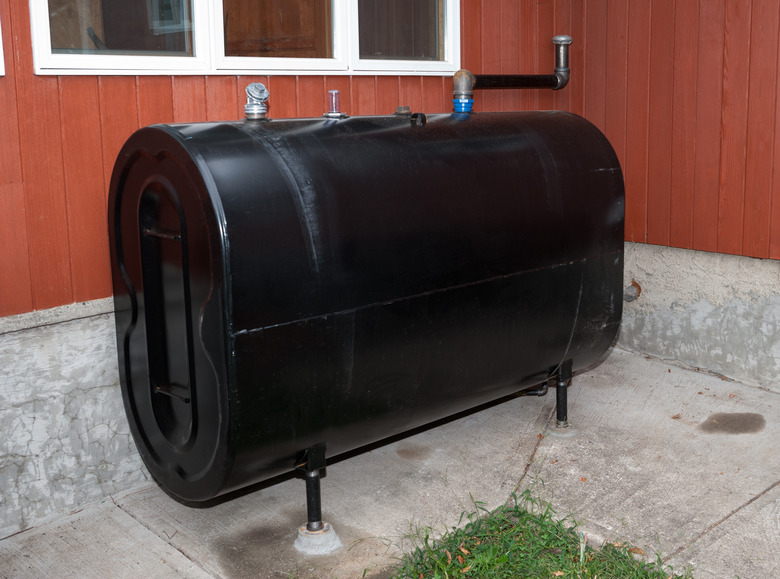How To Read An Oil Tank Gauge
We may receive a commission on purchases made from links.
If you have an oil tank at home, you may not exactly know how empty it may be. After all, oil tanks are typically large, metal cylinders into which you cannot easily look. To truly know whether you need more oil, you'll need to learn to read an oil tank gauge.
What Is an Oil Tank Gauge?
What Is an Oil Tank Gauge?
Oil tank gauges are traditionally analog, though digital and smart gauges have become available. The basic mechanism of an oil tank gauge is a float on a hinged arm. It is attached to a fixed post descending into the tank. As the level of oil drops, the float goes down as well, and the arm's change in position adjusts a meter on the outside of the tank. The meter is most commonly a bobber style with a clear tube marked at intervals with relative amounts, such as "1/2" or "E" for "empty."
Other meter styles include rolling meters that indicate the number of gallons or inches of oil left in the tank. These don't use swing-arm gauges but a float attached to a cable descending from the meter. While the cable-float gauges are more accurate than the swing-arm gauges, they are not as common, and there is always some room for error.
Reading an Oil Tank Gauge
Reading an Oil
Tank Gauge
In theory, a bobber-style meter is easy to read. You simply look at the tube and see where the little rubber or plastic float rests. You should read the meter from the middle of the float, ordering oil once the meter reaches one quarter.
You don't actually fill a heating oil tank all the way to the top, so a 275-gallon tank will actually only hold 225 gallons of oil. This means that when you read that one quarter remains, you'll only have a little over 50 gallons. Many oil delivery companies offer a discount if you order 200 gallons or more, but you should definitely plan to order when the tank is low.
No Oil Gauge?
No Oil Gauge?
Maybe the property manager or previous owner didn't feel the need to install a gauge on your tank, or maybe the person simply knew when to order more from experience and habit. You can absolutely take manual readings and develop an expectation for how often you'll need to order more. You can also take manual readings if you believe the gauge is broken or if oil is being used too quickly, as this can indicate that your tank has a leak. Leaks can be a serious ecological and safety risk.
Do not try to estimate the volume of a tank by tapping and listening for reverberation. All tanks sound the same whether empty or full. Instead, use a varnished stick to test the depth of the oil in your tank. Just like when you're checking a car's oil, you will want to wipe the stick and test it again, recording both measurements. Once you know the depth of your oil, reference a tank chart for help. If using this method be sure not to drop the stick to hit the bottom, rather set it on the bottom. Dropping the stick can possibly puncture an older rotting tank.
The size of your tank and the height of the oil can be used to determine the volume of oil remaining. By taking regular measurements, you'll come to understand how much oil you use in a given day, week or month and recognize when there's an irregularity. This will help you schedule regular oil deliveries throughout the winter.
References
- John M. Ellsworth Company: Morrison Bros. 718 Liquid Level Gauge w/ Standard Float- Calibrated in Inches
- FuelSnap: How to Read a Heating Oil Tank Gauge
- ckSmithSuperior: Your Tank Gauge
- SmartTouch Energy: How to Check Oil Levels Manually and Fix an Oil Tank Gauge
- FuelSnap: Home Heating Oil Tank Charts
